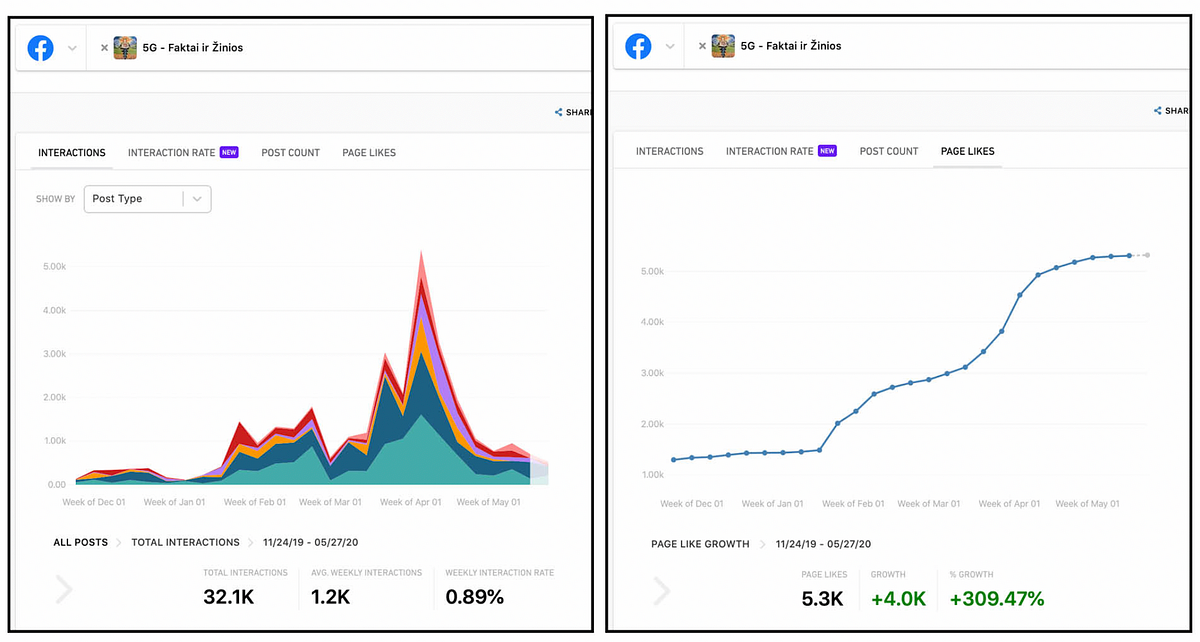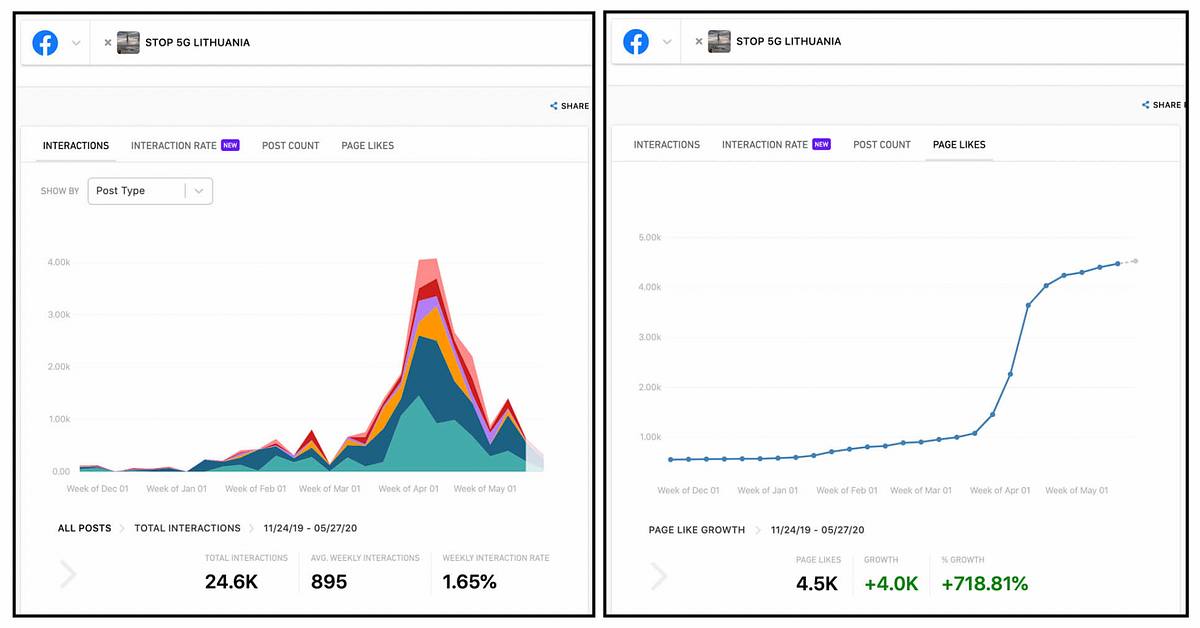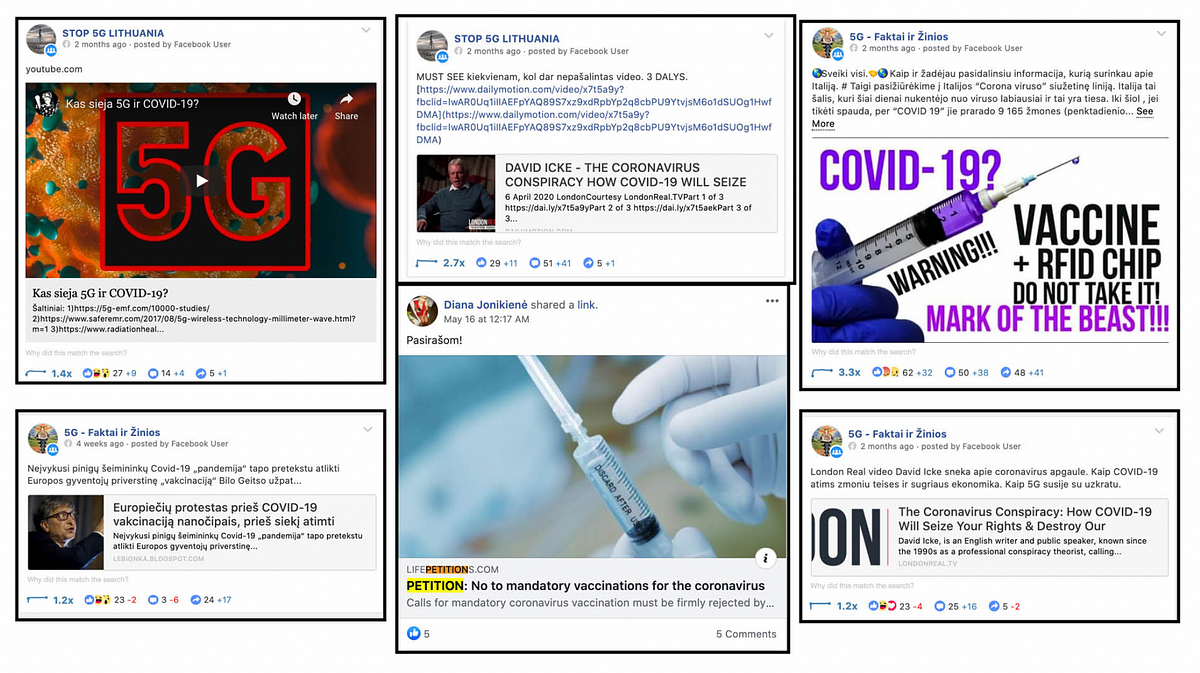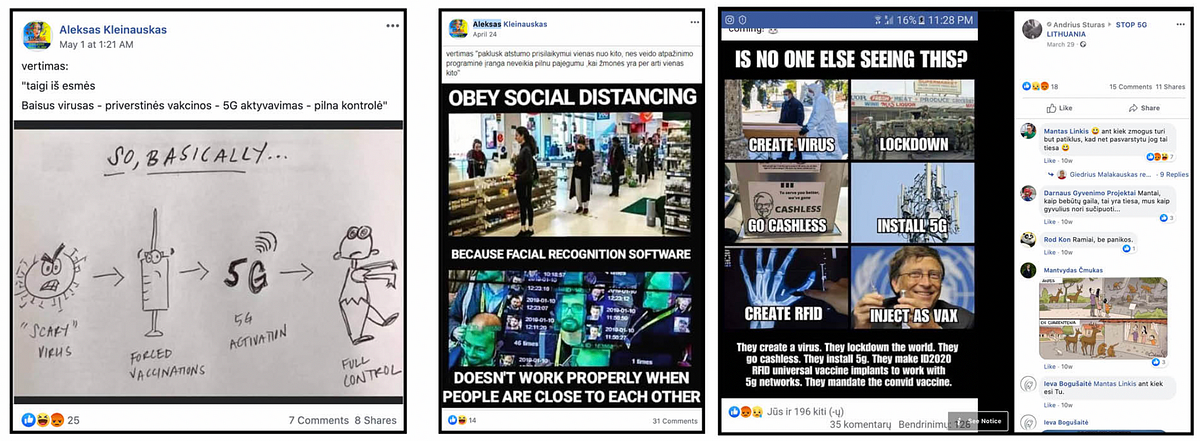The growing scene of Lithuanian conspiracy groups on Facebook
In the wake of COVID-19, several
The growing scene of Lithuanian conspiracy groups on Facebook

In the wake of COVID-19, several Lithuanian 5G conspiracy groups have dramatically increased their following

Since the outbreak of coronavirus in Lithuania, domestic 5G conspiracy Facebook groups have started pushing COVID-19 conspiracies — and they have gained an audience in doing so.
There are a number of active 5G conspiracy Facebook groups in Lithuania, as there are in many countries. Amid the pandemic, several of them have gained a significant number of followers. These Facebook groups do not receive a lot of attention from Lithuanian media, as they either go unnoticed or are not considered enough of a problem to warrant mainstream coverage. Nonetheless, some of these groups have managed to double, and in some cases, triple, in size since the beginning of the lockdown.
Last month, the DFRLab analyzed Georgian 5G conspiracy groups on social media, and found similar trends. Some researchers have argued that the design features of Facebook groups and similar online communities — particularly their emphasis on privacy and community — also makes them vectors for the spread of dangerous misinformation and disinformation.
Connections
On March 22, 2020, conspiracy theorists staged a protest in Vilnius, Lithuania. The organizers claimed that the protest was against the establishment of 5G mobile networks in Lithuania, but the crowd also carried signs attacking the LGBT community, vaccines, Bill Gates, and the “biased mainstream media” — all common conspiracy scapegoats. The protest managed to gather only a few dozen people, as the country was still under lockdown.
The Facebook page dedicated to the protest claimed that it was organized by a group called “Unfollow 15 min.lt” and a user named Vlad Green, who had no personal information on his profile. This Facebook group was created as a safe haven for Facebook users who think that 15min.lt, a Lithuanian mainstream media outlet, is censored or biased. This group managed to gather 50,000 followers in the first month of its existence and quickly turned into a platform for fringe conspiracies.

Invitations to the protest were disseminated amongst the anti-5G Facebook groups, many of which shared followers with the “Unfollow 15 min.lt” group.
Exponential growth
Initially small Facebook groups dedicated to 5G conspiracies have witnessed exponential growth since the start of the pandemic. Groups that started with hundreds of members now have several thousand, and their relatively high rate of activity makes them particularly noticeable for a small country like Lithuania. For comparison, the most popular Facebook group in the country providing verified COVID-19 information has 38,000 followers.
The DFRLab identified three 5G conspiracy groups that experienced the fastest growth over the course of the pandemic.
“5G — Faktai ir Žinios” (5G — Facts and News) — grew by nearly 310 percent, with much of the membership growth occurring in mid-February. The group reached a peak in interactions in mid-April, after which growth plateaued.

The “STOP 5G LITHUANIA” group experienced a similar pattern of growth. Membership grew exponentially in early April, and interactions reached a peak by mid-April.

Lastly, “Stop5G Lietuva” was created in early April, and quickly gathered a few hundred followers in the first month but has yet to experience exponential growth.

Shift to COVID-19 conspiracies
“Unfollow 15 min.lt” is a generalist conspiracy group that harbors a range of fringe theories. Members post pictures of new network antennas, claiming they are evidence of 5G expansion to Lithuania; they ridicule preventive measures against COVID-19; and they support fringe domestic political figures and positions. The group has close to 200 new posts per day and is also used to mobilize support for various causes, including a recent “Lithuanian Lives Matter” protest and an anti-5G petition.
The other anti-5G groups in question harbored similar conspiracies. Most of these stories were posted when these groups were experiencing high membership growth, which suggests that these posts may have fueled that growth.

The group members tended to share information that was fact-checked by independent fact-checkers. Some of these stories were checked by international fact checkers, and some by local media outlets such as 15min.lt, which the followers of these groups consider biased.

While the groups were dedicated to hosting 5G conspiracies, many of the stories combined multiple conspiracies into one, demonstrating the synergy among what otherwise appear to be niche conspiracy communities.

Lukas Andriukaitis is an Associate Director with the Digital Forensic Research Lab
Follow along for more in-depth analysis from our #DigitalSherlocks.

